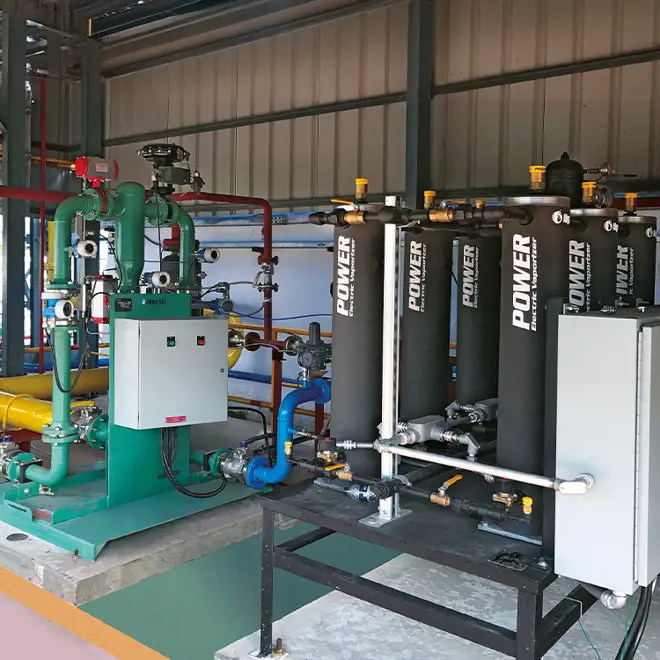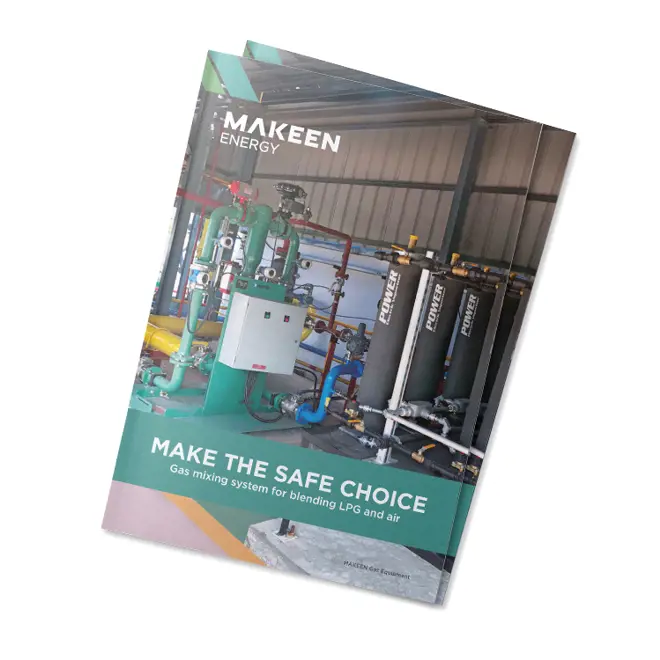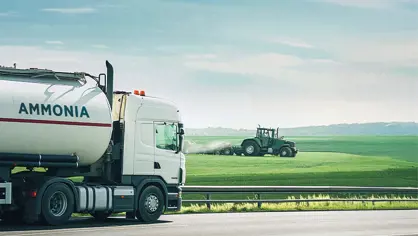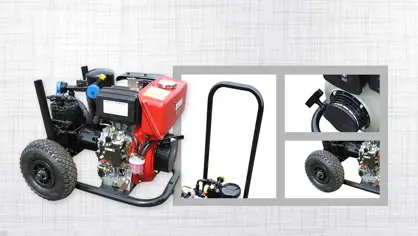Synthetic Natural Gas (SNG) can be created through several different processes, but one practical and commonly used method involves mixing Liquefied Petroleum Gas (LPG) with atmospheric air – roughly 60/40. This blend is designed to mimic the properties of natural gas, making it suitable for systems designed for natural gas without requiring any modifications.

The role of SNG
SNG is highly versatile and can be used in many of the same ways as natural gas. One of the significant advantages of SNG is that it can be transported and stored using existing natural gas pipelines and infrastructure, which makes it a flexible solution that fits into today’s energy systems.
Why use SNG?
There are several key situations where an LPG-air mixture as SNG makes practical sense. In remote locations, where natural gas infrastructure is unavailable, LPG is often easier to access. By blending it with air to create SNG, businesses and homes can benefit from gas energy without the need to install new equipment or pipelines. Since the calorific value and combustion properties of the mixture are carefully adjusted to match natural gas, there’s no need to modify or replace appliances, industrial burners, or boilers, making it a cost-effective and flexible solution.
For temporary supply, SNG serves as a dependable backup during natural gas supply interruptions, such as maintenance, outages, or shortages where critical infrastructure is prioritised. It ensures continuity of operations without major disruptions. Additionally, during peak demand periods—for example, in cold weather when energy consumption is high.
Furthermore, the local production of SNG from LPG can enhance energy security. In off-grid areas or during emergencies, this flexibility allows for energy needs to be met on-site, even when natural gas is unavailable. This blend of adaptability and reliability makes SNG a practical solution in a wide range of applications, ensuring a stable energy supply regardless of location or infrastructure.
Here's how it works:

1. LPG supply
Liquefied petroleum gas (LPG) is delivered. This typically requires an agreement with an LPG supplier.

2. LPG storage tank
Safely stores the LPG until it is needed for conversion, ensuring a consistent supply.

3. Vaporizer
Converts the stored LPG from a liquid to a gaseous state using electric or gas energy, preparing it for blending.

4. Air compressor
Supplies the necessary compressed atmospheric air to the SNG blender for an optimal mix.

5. SNG blender
Mixes the vaporized LPG with air, to secure a precise and correct a synthetic natural gas blend - approximately 60/40.

6. Synthetic gas (SNG)
The final product, synthetic natural gas, is ready for distribution and can be used as primary fuel or alternative to natural gas for backup, peak shaving, or supplementary use.
Since the goal is to produce a gas that behaves like natural gas, the resulting SNG can seamlessly flow through the same infrastructure used for natural gas, making it easy to switch between the two sources depending on availability. For users, this means there’s no need to modify their existing appliances or systems—SNG can be used in the same way as natural gas.
Some end-users, particularly factories and large industrial facilities, can benefit from having their own SNG generation facility on-site. This setup allows them to mix LPG with atmospheric air to create SNG, providing flexibility and energy security.
The Wobbe Index and SNG
The Wobbe Index is a critical measure in the gas industry, used to compare the energy output of different types of gas, including SNG and natural gas. It essentially indicates the interchangeability of gases in combustion equipment, such as burners, without needing to modify the equipment. The Wobbe Index helps determine whether different gases, or gas blends, can be used in the same system without affecting performance or safety.
The Wobbe Index is calculated using the calorific value (the energy content of the gas) and the specific gravity (the density of the gas relative to air). The formula is:

A higher Wobbe Index means the gas delivers more energy for a given flow rate, while a lower index indicates less energy. Gases with similar Wobbe Index values are generally compatible with each other for use in the same combustion systems, like industrial burners or home appliances.
For SNG to be a viable substitute for natural gas, its Wobbe Index must fall within a certain range to ensure safe and efficient combustion in existing natural gas infrastructure. This is particularly important for applications where gas interchangeability is required without modifying equipment, such as in residential heating systems, industrial furnaces, or power plants.
Why is the Wobbe Index important for SNG?
When replacing natural gas with SNG, it's essential that the Wobbe Index of the two gases is similar. If the Wobbe Index of SNG is too high or too low compared to natural gas, it could lead to inefficient combustion, equipment malfunctions, or safety hazards. For example, a higher Wobbe Index gas could produce excessive heat, potentially damaging burners, while a lower Wobbe Index gas might cause incomplete combustion, leading to increased emissions of pollutants like carbon monoxide.
By carefully adjusting the composition of SNG during production, its Wobbe Index can be tailored to match that of natural gas. This ensures that SNG can be seamlessly integrated into existing gas networks and used in standard gas appliances without compromising safety or efficiency.

Download our brochure for SNG
With the same characteristics as natural gas, synthetic natural gas (SNG) can act as a supplement or an alternative. It can be transported and stored using existing natural gas pipelines and infrastructure, which makes it a flexible solution that fits into today’s energy systems.
Related pages
Get in touch!
Whether you already know what you need, or you would like the opinion of an expert, we are always ready to help you out.
We carry all the necessary and nice-to-have equipment and accessories for anhydrous ammonia, from NH3 hoses and valves to pumps, compressors, filters and everything in between.



